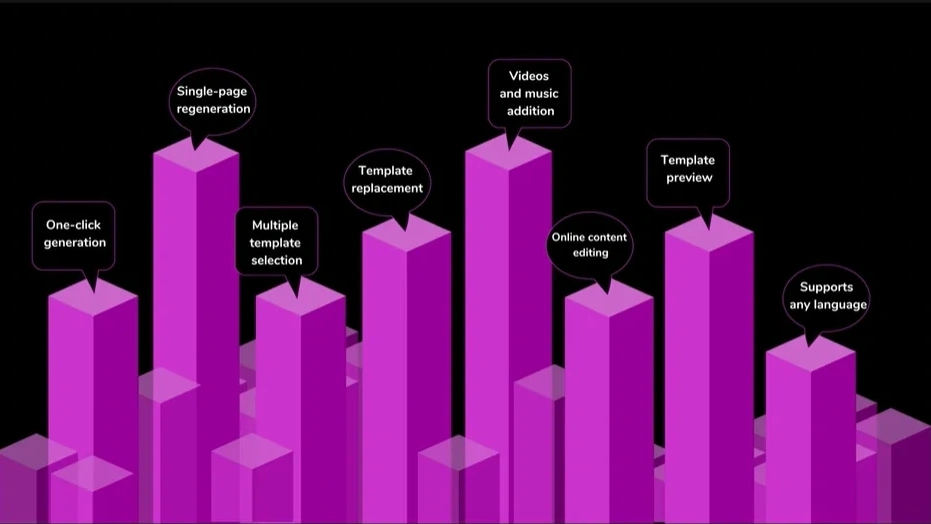
According to research presented at the association's meeting in Chicago this week, adults who limit their food intake to eight hours a day are 91 percent more likely to die from cardiovascular disease than those who eat 12 to 16 hours a day. Based on this study, the American Heart Association announced that intermittent fasting, a popular method of losing weight and fighting inflammation, has been labeled a serious health risk. This news story reports on recent research findings on health. Journalism is a way of reporting research findings. In addition to this, creating a research presentation is also a way of presenting your research findings. So, what would you do if you were asked to demonstrate a research study? This blog post will reveal to you the mysteries of how to make a research presentation.
What is a research presentation?
A research presentation is a form of communication in which researchers present their findings, methods, and conclusions to an audience. It is a way for researchers to share their work with others in a clear, concise, and in a clear, concise, and engaging way. Research presentations can take a variety of forms. Research presentations are essential for sharing knowledge, fostering collaboration, and receiving feedback from peers and experts in the field. They play a critical role in advancing research and contributing to the academic and scientific community.

The relationship between research report and research presentation:
A research report provides a comprehensive written account of a study. A research presentation offers a condensed, visual, and interactive overview of the key findings, catering to different audiences and communication contexts.
Research Report:
1. Purpose: A research report is a detailed document describing research methodology, results, analysis, and conclusions. It provides a comprehensive account of the research process and the results of the research.
2. Audience: Research reports are typically written for an academic or professional audience, such as academics, researchers, policymakers, or stakeholders who have an interest in the topic of the research.
3. Format: Research reports typically follow a structured format, including an introduction, literature review, methodology, results, discussion, and conclusion.
4. Length: The length of a research report can vary depending on the complexity of the study and the requirements of the target audience.
Research Presentation:
1. Purpose: A research presentation is a verbal communication of the most important findings of a research study. It aims to convey the main points of the research clearly and engagingly.
2. Audience: Research presentations are often given to a live audience. They may include colleagues, peers, conference attendees, or stakeholders. They may also be shared online or in other formats for wider dissemination.
3. Format: Research presentations can take several forms, including oral with slides, postered, or multimedia-based. The format will depend on the context of the presentation (e.g., conference, seminar, workshop).
4. Content: Research presentations typically highlight the research study's objectives, methodology, key findings, and implications. They may also include visual aids such as charts, graphs, and images to enhance understanding.
5. Length: Research presentations are brief and targeted, usually lasting several minutes to 30 minutes, depending on setting and time constraints.
Relationship:
1. Complementary: In the dissemination of research results, a research report and a research presentation complement each other. The presentation provides a condensed and visually appealing overview, while the report provides a detailed account of the research process and results.
2. Synthesis: Based on the content of the research report, researchers often prepare the research presentation. The presentation is a synthesis of the report's key points in a format suitable for live delivery or online sharing.
3. Audience Engagement: While the research report is designed for readers who prefer an in-depth analysis, the research presentation allows for direct interaction with the audience, facilitating discussion, questions, and feedback.

The key elements of a research presentation:
1. Introduction: Provide background information on the research topic and state the research question or objective. Also, introduce the significance or relevance of the research.
2. Objectives or Research Questions: Your objectives and questions should be introduced in the presentation. It's a clear statement of the objectives or research questions that guide the study.
3. Literature Review: If you use some literature, show it. Provide a summary of relevant literature and previous research on the topic. Identify the gaps or limitations in existing knowledge.
4. Methodology: Describe the methods and techniques used to conduct the research, including data collection and analysis procedures.
5. Results: Present the main findings of the research, often supported by data, charts, graphs, or visuals. Clearly label and explain the data presented.
6. Discussion: Analyze and interpret the results. Discuss their significance, limitations, and implications. Address any limitations or challenges encountered during the study.
7. Conclusion: Summarize the main points of the presentation and highlight the most important takeaways for the audience. This may include suggesting future research or areas for further investigation or concluding remarks or final thoughts.
8. Questions and Discussion: Allow the audience to ask questions or seek clarification. Engage the audience to facilitate discussion and exchange of ideas.
How to create a research presentation with Smallppt?
1. Organize your content: You will need to outline the structure of your presentation, including the main sections and sub-sections, and decide on the order in which you will present your content to ensure a logical flow and coherence.
2. Review your research materials: Gather all relevant research, data, and analysis. Review your research report, if available. Identify key points and findings to include in your presentation.
3. Login or register with Smallppt: Before using Smallppt, users can log in or register on the site. Users can also get acquainted with the site.
4. Content input and analysis: Enter your topic into Smallppt, and the AI will understand the key messages, themes, and objectives of your topic. It will identify the important points and provide you with an outline. Adjust the outline based on your research.
5. Choose a template: Smallppt provides many templates, you can also choose one based on what you've researched. These templates are designed to visually enhance the presentation and make it more appealing to the audience.
6. Content Generation: Using machine learning algorithms, Smallppt generates slides for the sales deck based on the analyzed content and the selected template. To effectively convey the message, it creates slides that include key points, data visualizations, images, and other relevant elements.
7. Customization: Users can further customize the generated slides. They can edit the introduction, the methodology, and the results, upload their images or branding elements, and make other adjustments to tailor the presentation to meet their specific needs.
8. Preview and review: Preview the generated presentation and review each slide to ensure the accuracy, coherence, and relevance of the presentation in Smallppt. You can make additional edits or refinements as needed before finalizing the presentation.
9. Export and download: Once satisfied with the sales deck, users can export the PowerPoint file in the desired format (e.g. PPTX) for sharing, presenting, or further customization outside of Smallppt.

Smallppt can free your hands with AI.
Smallppt's AI PowerPoint is a game-changer in the realm of professional presentations. Its innovative features, collaborative capabilities, and focus on aesthetics redefine the standards of presentation creation.
It transforms the dull task of presentation creation into a seamless and delightful process. With a focus on design, content, and collaboration, Smallppt ensures that professionals can effortlessly craft presentations that leave a lasting impression. Elevate your presentations, captivate your audience, and redefine your professional narrative with the power of AI.


